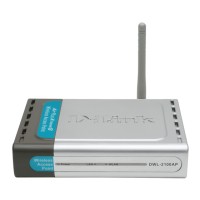Spanning Tree Protocol (STP) Commands 47
2 Switching Commands
Default 32768
Format
spanning-tree mst priority <mstid> <0-61440>
Mode Global Config
no spanning-tree mst priority
This command sets the bridge priority for a specific multiple spanning tree instance to the
default value. The parameter
<mstid> is a number that corresponds to the desired existing
multiple spanning tree instance.
If 0 (defined as the default CIST ID) is passed as the
<mstid>, this command sets the Bridge
Priority parameter for the common and internal spanning tree to the default value.
Format
spanning-tree mst priority <mstid>
Mode Global Config
spanning-tree mst vlan
This command adds an association between a multiple spanning tree instance and a VLAN so
that the VLAN is no longer associated with the common and internal spanning tree. The
parameter
<mstid> is a number that corresponds to the desired existing multiple spanning tree
instance. The
<vlanid> corresponds to an existing VLAN ID.
Format
spanning-tree mst vlan <mstid> <vlanid>
Mode Global Config
no spanning-tree mst vlan
This command removes an association between a multiple spanning tree instance and a VLAN
so that the VLAN is again be associated with the common and internal spanning tree. The
parameter
<mstid> is a number that corresponds to the desired existing multiple spanning tree
instance. The
<vlanid> corresponds to an existing VLAN ID.
Format
no spanning-tree mst vlan <mstid> <vlanid>
Mode Global Config
spanning-tree port mode
This command sets the Administrative Switch Port State for this port to enabled.
Default disabled
Format
spanning-tree port mode
Mode Interface Config
no spanning-tree port mode
This command sets the Administrative Switch Port State for this port to disabled.
Format
no spanning-tree port mode
Mode Interface Config

